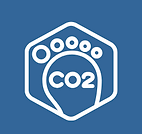Environmental Services
At PCC Consultants, our commitment to environmental sustainability is at the core of everything we do. Our team of civil and structural engineers is dedicated to delivering solutions that prioritize the environment while meeting the unique needs of each project.

Flood Risk Management
Effective flood risk management is crucial in urban planning and construction to protect communities and ensure the longevity of infrastructure. Our approach follows the National Model Design Code, emphasizing the use of sustainable drainage systems (SuDS) and the strategic placement of developments to mitigate flood risks and enhance the local environment.
SuDS
SuDS mimic natural drainage processes to manage surface water efficiently, reducing the risk of flooding and improving water quality and biodiversity.
For more info see our Blog.
Green Roofs and Walls
These features provide capacity to hold and attenuate water runoff, offering ecological and leisure benefits.
Permeable Surfacing
Materials that allow water to percolate into the ground, such as natural surfaces, gravel, and engineered road surfaces.
Swales
Shallow channels that provide water attenuation and direct water to ponds or other drainage features.
Rain Capture
Systems like water butts collect rainwater for non-potable uses, reducing overall water consumption.
Soakaways & Filter Drains
Gravel or stone-filled trenches that allow uncontaminated water to percolate into the ground.
Retention Tanks
Underground structures that store water in high-density developments.
Street Tree Planting
Trees integrated with SuDS can offer dual benefits, including water management and ecological enhancements.
Rain Gardens
Plant-filled containers or ditches that gradually release water and filter out pollutants.
Basins & Ponds
Systems like water butts collect rainwater for non-potable uses, reducing overall water consumption.
Reedbeds & Wetlands
These areas provide water attenuation, pollutant filtration, and wildlife habitats.
Carbon Embodiment
Carbon embodiment refers to the total carbon emissions associated with the production and transportation of building materials. Reducing embodied carbon is essential for sustainable construction and involves strategies such as retrofitting and reusing existing structures, utilizing low-carbon materials, and designing for future disassembly.
For more information, check out our blog.

Strategies
Reducing embodied carbon in construction projects.
Retrofit & Reuse
Prioritizing the retrofit and reuse of buildings conserves resources, reduces waste, and minimizes embodied carbon emissions.
Recycled Materials
sing recycled steel and other materials lowers the carbon footprint of construction projects.
Timber Usage
Employing timber from managed forests as a substitute for concrete, masonry, and steel.
Simplified Designs
Streamlining the configuration of structures and facades to reduce embodied carbon.
Design for Disassembly
Planning buildings for easy disassembly and material reuse at the end of their life cycle.
Foundations Accommodating Trees
Designing foundations that support tree growth, integrating green infrastructure into urban spaces.
Green Infrastructure
Creating networks of multifunctional green spaces such as parks, woodland, and green roofs to support ecological processes.

Building Energy Efficiency
Energy efficiency is vital for reducing the environmental impact of buildings. By improving the energy performance of structures, we can significantly cut greenhouse gas emissions and operational costs, contributing to overall sustainability goals.
Key Elements
for improving the energy performance of buildings.
1 / Material Selection
Choosing materials with high thermal and solar performance tailored to the specific development area.
2 / Passive Design
Utilizing building layout and orientation to maximize passive solar gain, daylight levels, and natural ventilation, thus reducing energy needs.
3 / Solar Energy Generation
Optimizing roofscapes for solar photovoltaic (PV) systems with south-facing orientations and reflective surfaces.
4 / Emerging Technologies
Allocating space for new technologies like ground and air source heat pumps to future-proof buildings.




